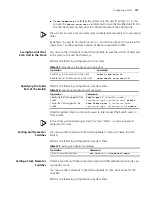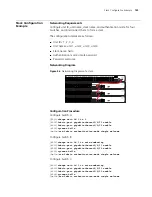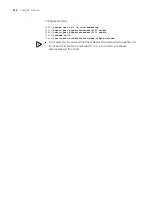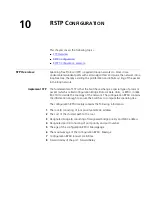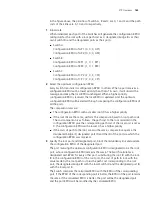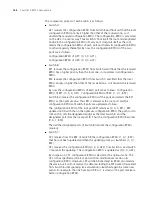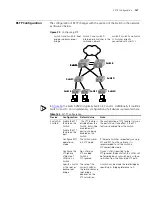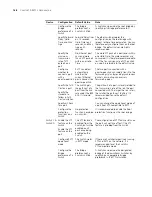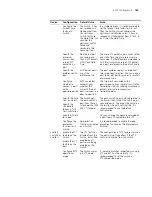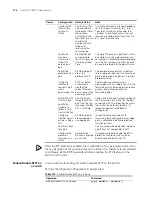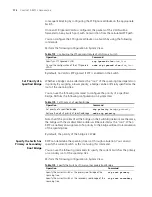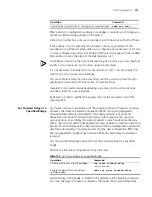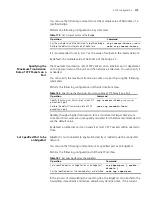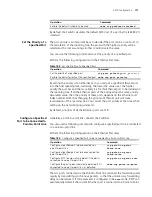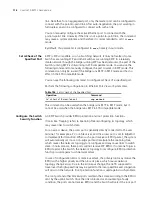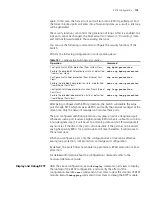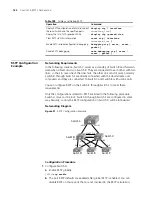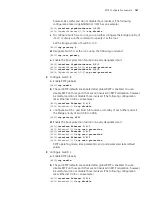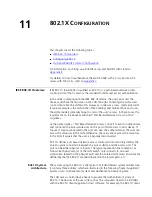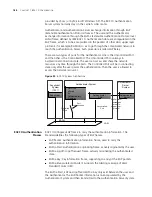
170
C
HAPTER
10: RSTP C
ONFIGURATION
After the STP protocol is enabled, the modification of any parameter will result in
the re-calculation of the spanning tree on the Switch. It is therefore recommended
to configure all the RSTP parameters before enabling the STP feature on the
Switch and the port.
Enable/Disable RSTP on
a Switch
You can use the following command to enable RSTP on the Switch.
Perform the following configurations in System View.
Table 170
Enable/Disable RSTP on a Device
Configure the
timeout time
factor of a
Switch
The Switch, if has
not received any
Hello packet from
the upstream
Switch for thrice
the Hello Time, will
consider the
upstream Switch
failed and
recalculate the
spanning tree.
In a stable network, it is recommended to
set the timeout time factor to 5, 6, or 7.
Then the Switch will not consider the
upstream Switch failed unless it has not
received any Hello packet from it for 5, 6,
or 7 times the Hello Time.
Specify the
maximum
transmission
rate of STP
packets on a
port
No Ethernet pot
can send more
than 3 STP packets
within one Hello
Time.
The more STP packets a port sends within
one Hello Time, the more resources are
consumed. It is therefore recommended to
limit the transmission rate of STP packets
on a port, preferably to the default value.
Specify the
preference of a
port
All Ethernet ports
are at the
preference 128.
The port preference plays an important
role in root port selection. You can make a
port to be root port by giving it a smallest
preference value.
Configure
whether to
connect a port
with a
peer-to-peer link
RSTP can detect
automatically
whether the
current Ethernet
port is connect to a
peer-to-peer link.
The two ports connected with a
peer-to-peer link can rapidly transit to the
forwarding status by sending synchronous
packets, eliminating unnecessary
forwarding delay.
Specify the Path
Cost on a port
Specify the
standard to
follow in Path
Cost calculation
The Switch gets
the path cost of a
port from the link
rate under the IEEE
802.1t standard.
The path cost of a port is closely related to
the transmission rate of the link the port
connected with. The larger the link rate is,
the smaller the path cost shall be. It is
recommended to use the default
configuration.
Configure
whether a port
can be an Edge
Port
All Ethernet ports
are configured as
non-edge ports.
For ports directly connected with
terminals, please configure them as edge
ports, and enable the BPDU protection
function on them.
Specify mCheck
for a port
-
You can change the operational mode of
a port from STP-compatible to RSTP.
Configure the
protection
functions on a
Switch
No protection
function is enabled
on a Switch.
It is recommended to enable the BPDU
protection function on the Switches
directly connected with user PCs.
Device
Configuration Default Value
Note
Operation
Command
Enable/Disable RSTP on a device
stp { enable | disable }
Summary of Contents for 400 Family
Page 12: ......
Page 16: ...14 ABOUT THIS GUIDE ...
Page 58: ...56 CHAPTER 2 PORT OPERATION ...
Page 68: ...66 CHAPTER 3 VLAN OPERATION ...
Page 98: ...96 CHAPTER 5 NETWORK PROTOCOL OPERATION ...
Page 124: ...122 CHAPTER 6 IP ROUTING PROTOCOL OPERATION ...
Page 156: ...154 CHAPTER 8 ACL CONFIGURATION ...
Page 218: ...216 CHAPTER 11 802 1X CONFIGURATION ...
Page 298: ...296 CHAPTER 13 PASSWORD CONTROL CONFIGURATION OPERATIONS ...
Page 336: ...334 APPENDIX B RADIUS SERVER AND RADIUS CLIENT SETUP ...


